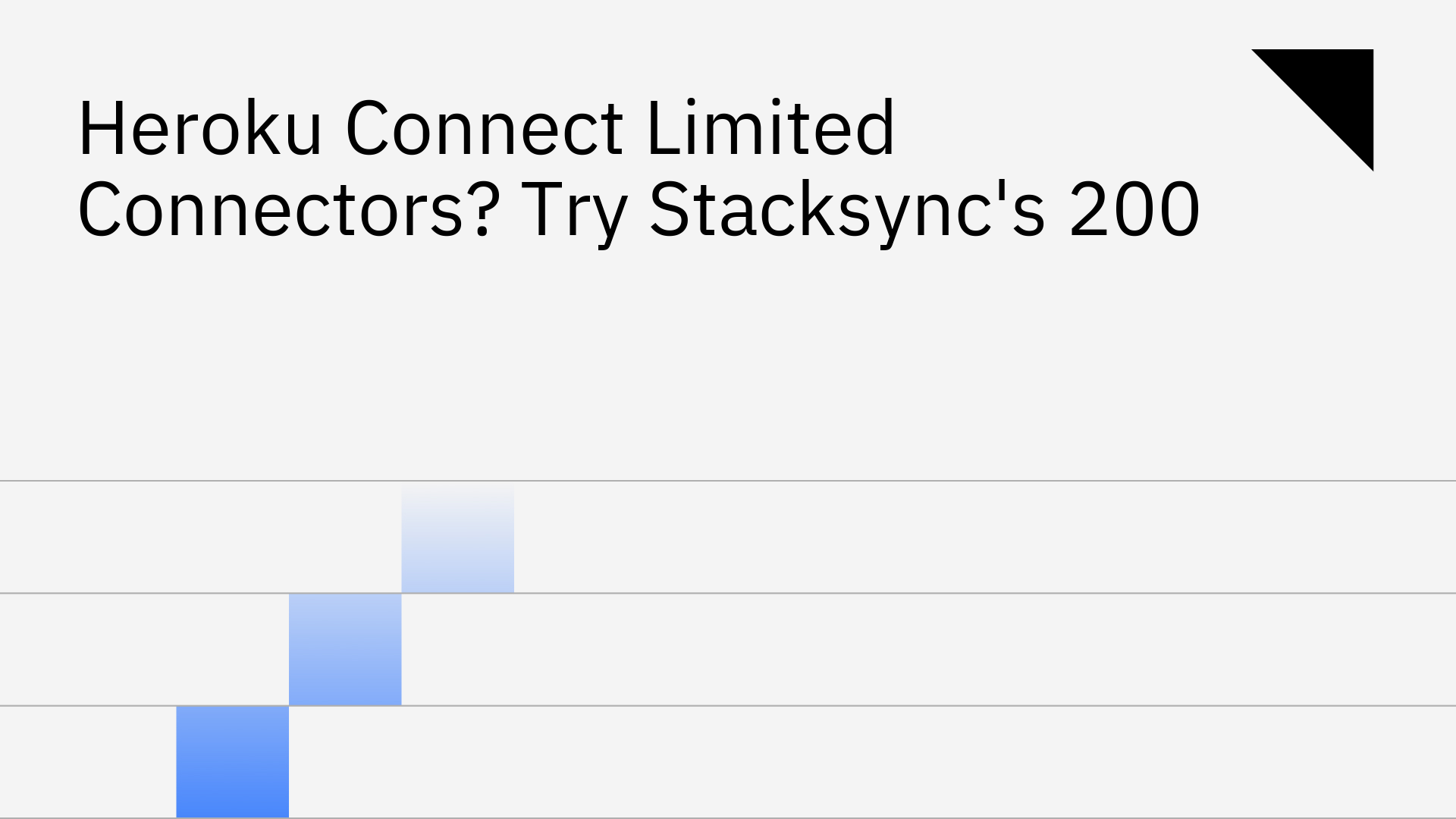Heroku Connect is a service designed to sync data between Salesforce and a Heroku Postgres database. While useful for its specific purpose, its primary function is also its biggest weakness: it locks users into a very specific ecosystem. For any business with a diverse tech stack, the problem of heroku connect limited connectors becomes a significant operational bottleneck. Stacksync provides a powerful, real-time Heroku Connect alternative that shatters these limitations with a library of over 200 pre-built connectors [1].
What is Heroku Connect and What Are Its Limitations?
Heroku Connect is a Heroku add-on that provides data synchronization between Salesforce and Heroku Postgres databases [2]. It is primarily used by developers building applications on the Heroku platform that need to interact with Salesforce data within Heroku's broader data management ecosystem [8]. While this tight integration can be beneficial for teams fully committed to Heroku, it creates a rigid data silo for any organization looking to scale.
The narrow focus on just two systems is the main limitation. This means businesses cannot integrate other CRMs, ERPs, or databases without building and maintaining costly custom solutions.
Beyond its limited connectivity, Heroku Connect presents other significant drawbacks:
- Sync Speed: Syncing can be slow. When dealing with a high volume of non-contiguous changes, the service is often forced to use the slower SOAP API instead of the much faster Bulk API, leading to data latency [5].
- API and Batch Limits: The platform is susceptible to the "Maximum number of duplicate updates in one batch" error, which occurs when too many updates are made to a single record. This restriction, which is set by Salesforce, severely limits scalability and reliability [3].
- Complexity: Managing API interactions [7], mapping configurations [4], and understanding the underlying table structures that Heroku Connect creates can be surprisingly complex for development teams, adding unnecessary operational overhead [6].
Stacksync: The Alternative to Heroku Connect's Limited Ecosystem
Stacksync is a modern, flexible data integration platform built to address the limitations of tools like Heroku Connect. The key differentiator is Stacksync's library of over 200 pre-built connectors for a wide range of systems, including:
- CRMs: Salesforce, HubSpot, Zoho, Pipedrive
- ERPs: NetSuite, SAP, Microsoft Dynamics 365
- Databases & Warehouses: Postgres, MySQL, Supabase, Snowflake, BigQuery
Stacksync provides a robust solution for businesses needing to sync data far beyond the Salesforce-Heroku bubble. It enables a true Postgres Heroku two-way sync integration while also connecting to all your other critical business applications.
Feature-by-Feature Comparison: Heroku Connect vs. Stacksync
Connectors and Flexibility
- Heroku Connect: Limited to just two connectors: Salesforce and Heroku Postgres. This is not suitable for businesses with diverse tech stacks and creates vendor lock-in.
- Stacksync: Over 200 connectors for CRMs, ERPs, databases, and more. It offers the flexibility to build a truly integrated and automated data ecosystem without being confined to a single platform.
Sync Capabilities
- Heroku Connect: Offers one-way or two-way sync but is not truly real-time. It operates on a polling schedule (e.g., every 10 minutes), which creates data delays and is inadequate for operational use cases.
- Stacksync: Provides real-time, bidirectional (two-way) sync in milliseconds. Features include custom sync frequency, event-driven triggers for custom workflows, and smart API rate limits to prevent hitting quotas. See how we compare to other Heroku Connect alternatives for real-time data sync.
Scalability and Reliability
- Heroku Connect: Prone to performance bottlenecks and batch update limits. Error handling is complex and often requires developer intervention to diagnose and fix.
- Stacksync: Built to scale from thousands to millions of records without you needing to manage infrastructure. It includes an issue management dashboard to avoid silent failures, allowing users to retry or revert issues with a single click.
Pricing and Cost-Effectiveness
- Heroku Connect: Pricing is based on the number of rows synced, which can become expensive and unpredictable as your data volume grows.
- Stacksync: Offers a more predictable pricing model that provides better value, especially considering its extensive features and connector library. For a deeper dive, see our comparative analysis of pricing models. This transparency helps businesses cut down on cloud costs and the hidden expenses of building and maintaining custom integrations.
Why Stacksync is the Superior Choice for Data Integration
Choosing Stacksync empowers your business to move beyond simple point-to-point sync and build comprehensive, automated workflows. The platform delivers reduced engineering overhead, improved data accuracy, and the ability to make real-time, data-driven decisions across your entire organization. As a real-time sync platform for the mid-market, Stacksync is engineered for both power and accessibility.
If your business is struggling with Heroku Connect's limited connectors and performance issues, it's time to replace Heroku Connect with a more powerful and scalable solution.
Book a demo with a cloud architect to see how Stacksync can transform your data strategy, or start your 14-day free trial today.
